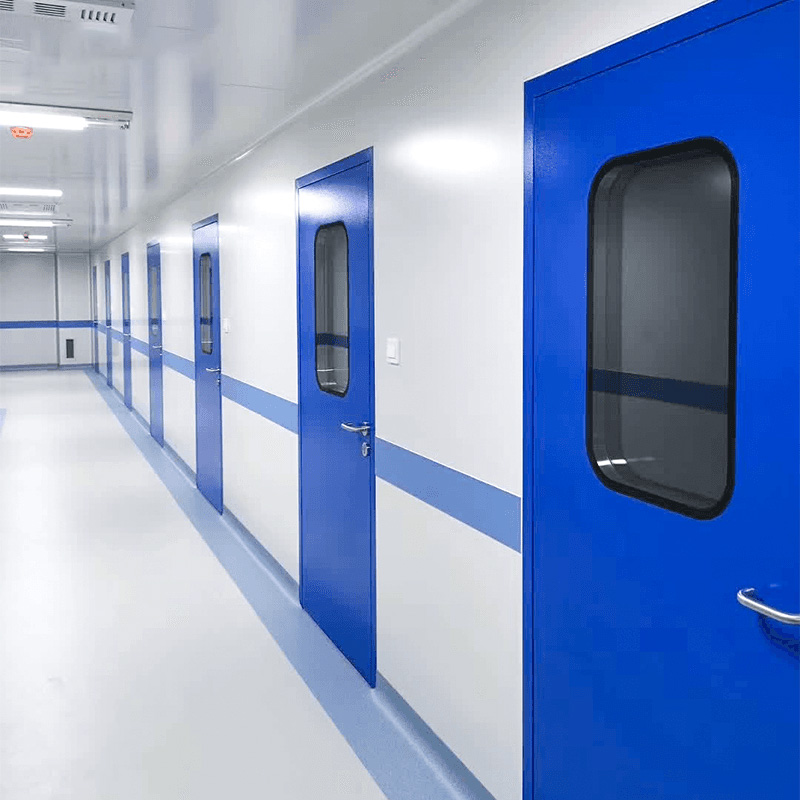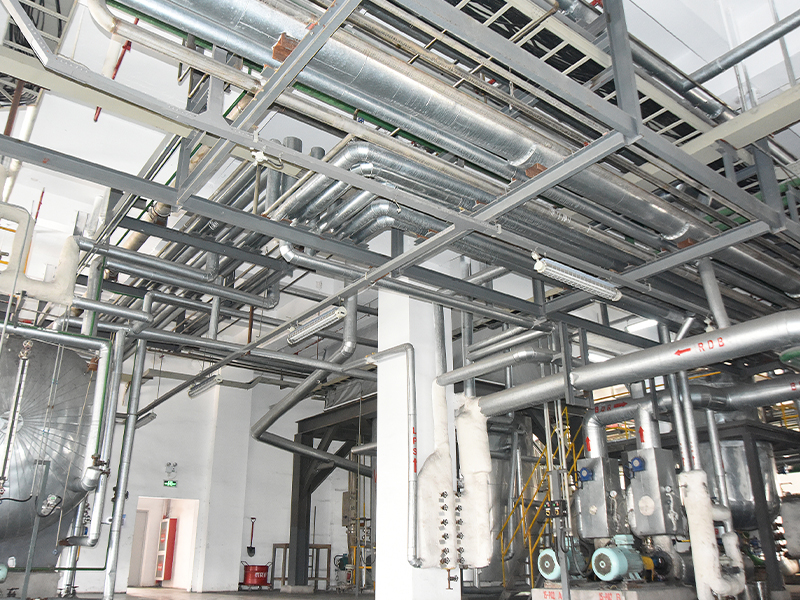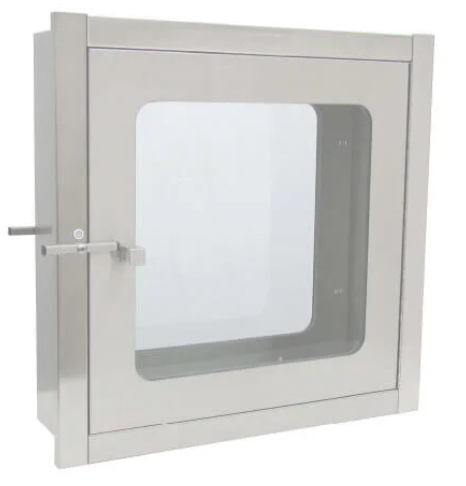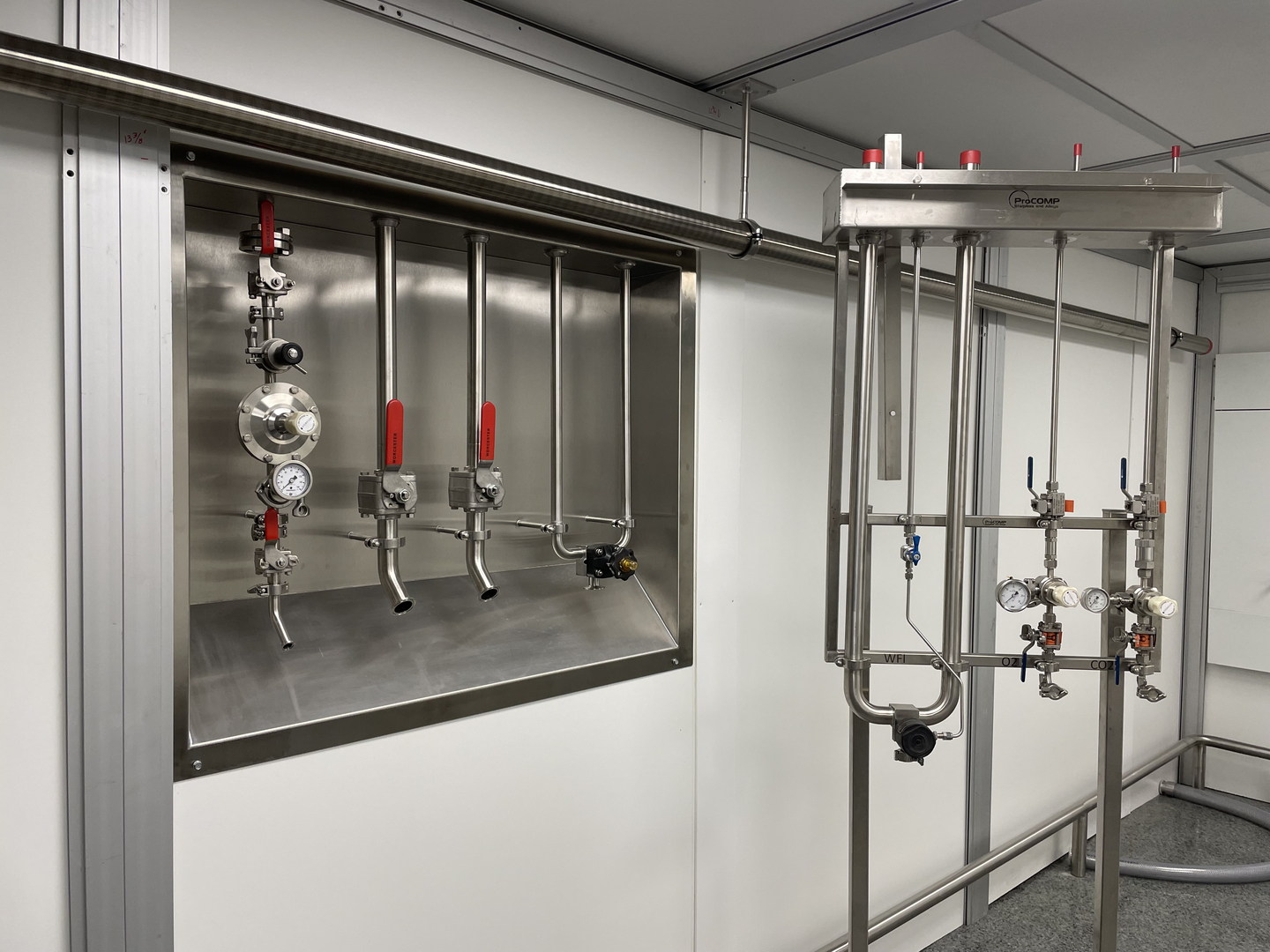The surface treatment of cleanroom doors plays a crucial role in preventing the accumulation of contaminants, which is vital for maintaining the controlled environment required in cleanrooms. Here’s an in-depth look at how various surface treatments contribute to contamination control:
1. Smooth and Non-Porous Surfaces
Key Characteristics:
Minimal Texture: Cleanroom doors often have extremely smooth surfaces with minimal texture to reduce the areas where particles can adhere.
Non-Porous: Materials used are typically non-porous, preventing contaminants from embedding in the surface.
Mechanism:
Reduced Adhesion: Smooth and non-porous surfaces minimize the points of contact for dust, microbes, and other contaminants, making it difficult for them to adhere.
Ease of Cleaning: The lack of pores and texture makes it easier to clean and disinfect the surfaces, ensuring that contaminants are effectively removed.
Impact:
Lower Contamination Risk: Fewer contaminants adhere to the surface, reducing the risk of contamination.
Enhanced Cleanability: Surfaces can be easily wiped down and sanitized, maintaining a sterile environment.
2. Antimicrobial Coatings
Key Characteristics:
Incorporation of Antimicrobials: Coatings may include antimicrobial agents like silver ions or other biocides.
Long-Lasting Effectiveness: These agents are embedded in the coating to provide long-lasting antimicrobial properties.
Mechanism:
Inhibition of Microbial Growth: Antimicrobial agents disrupt the cellular functions of bacteria, fungi, and other microorganisms, preventing their growth and proliferation on the door surface.
Continuous Protection: The antimicrobial properties continuously protect the surface, reducing the need for frequent deep cleaning.
Impact:
Reduced Biofilm Formation: Antimicrobial coatings prevent the formation of biofilms, which can harbor harmful microbes.
Enhanced Hygiene: Continuous microbial control helps in maintaining a higher level of cleanliness and hygiene.
3. Electrostatic Dissipative Coatings
Key Characteristics:
Electrostatic Properties: Coatings are designed to dissipate static charges that can attract dust and particles.
Conductive Materials: These coatings often contain conductive materials that help in neutralizing static electricity.
Mechanism:
Static Dissipation: By dissipating static charges, these coatings prevent the accumulation of dust and particulate matter that can be attracted to charged surfaces.
Reduction of Airborne Contaminants: Less static electricity means fewer airborne particles settle on the door surface.
Impact:
Cleaner Surfaces: Reduced static attraction leads to fewer particles adhering to the door, keeping it cleaner.
Improved Air Quality: Less particulate matter on surfaces contributes to better overall air quality in the cleanroom.

4. Chemical-Resistant Coatings
Key Characteristics:
Resistance to Chemicals: These coatings are resistant to harsh cleaning agents and solvents.
Durability: They provide a tough barrier that can withstand repeated cleaning without degrading.
Mechanism:
Durability Against Cleaners: The chemical resistance ensures that the coatings remain intact and effective, even after exposure to cleaning and disinfecting chemicals.
Prevention of Surface Degradation: Maintaining the integrity of the surface prevents the formation of cracks or pores where contaminants can accumulate.
Impact:
Consistent Performance: The door surface remains easy to clean and resistant to contaminants over time.
Enhanced Longevity: The durable coating extends the life of the door and maintains its contamination control capabilities.
5. UV-Curable Coatings
Key Characteristics:
UV Curing Process: These coatings are hardened and cured using ultraviolet light.
Smooth and Durable Finish: The curing process results in a hard, smooth, and durable surface.
Mechanism:
Sealing of Pores: UV-curable coatings create a tightly sealed surface that prevents contaminants from penetrating.
High Gloss and Smoothness: The resulting smooth finish reduces areas where particles can adhere.
Impact:
Reduced Contamination: The sealed and smooth surface is less likely to harbor contaminants.
Ease of Cleaning: The hard and glossy finish facilitates easy cleaning and disinfection.
6. Hydrophobic and Oleophobic Coatings
Key Characteristics:
Water and Oil Repellency: These coatings repel water and oil-based substances.
Surface Tension Modification: They modify the surface tension to prevent liquids from spreading and adhering.
Mechanism:
Preventing Liquid Adherence: Hydrophobic and oleophobic properties prevent liquids from sticking to the surface, reducing the risk of liquid-based contaminants.
Easier Cleaning: Liquids bead up and roll off, carrying away contaminants and making cleaning more effective.
Impact:
Less Contaminant Retention: Reduced liquid adherence means fewer contaminants are retained on the surface.
Improved Hygiene: The repellency aids in maintaining a clean and hygienic surface.
The surface treatment of cleanroom doors involves a combination of smooth finishes, antimicrobial coatings, static dissipative properties, chemical resistance, UV curing, hydrophobic and oleophobic coatings, and high-density treatments. These features work together to prevent the accumulation of contaminants by creating surfaces that are resistant to particle adhesion, microbial growth, and chemical degradation, ensuring the doors remain clean and maintain the controlled environment of the cleanroom.

 English
English русский
русский Español
Español





